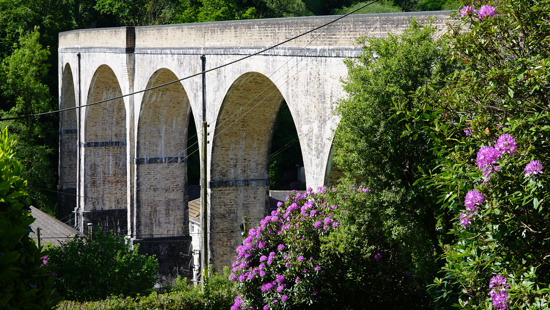Thousands seize unique opportunity to walk across iconic Devon viaduct

Standing at 70ft tall and 400ft long, this impressive structure in Devon is the largest narrow-gauge viaduct in the country.
It is maintained by National Highways’ Historical Railways Estate which invited people to enjoy the spectacular views from the bridge deck and enjoy a walk along the track bed of the Lynton and Barnstaple Railway as part of the Railway 200 celebrations.
This is a year-long campaign to celebrate 200 years of the modern railway and inspire a new generation to choose a career in rail. The HRE team were joined by the Lynton and Barnstaple Railway, and the Chelfham Valley Heritage Hub (at The Growforward Wellbeing Project) to host two days of events to mark Railway 200.

Caption: Crowds flock to visit Chelfham Viaduct
Helene Rossiter, Head of HRE, said, “We’re delighted the public opening has been such a great success and so many people walked across the viaduct over the weekend.
“This was a unique opportunity for the local community and rail enthusiasts to enjoy spectacular views from an iconic piece of North Devon history and share their own stories about the railway.
“We have a large stake in the railways’ history, maintaining over 3,100 former railway structures including bridges, tunnels, and viaducts across the country. Chelfham, like all our structures, is inspected regularly and in recent years we carried out brickwork repairs and vegetation clearance to ensure it stays in good condition and can be enjoyed for many generations to come.”

Caption: A unique opportunity to walk across the viaduct
Lynton and Barnstaple Railway has a long-term goal of restoring the railway and supported the event with educational talks about the history of the railway line.
The Lynton-Barnstaple Railway line ran across the top of the viaduct from 1896 until it closed in 1935. It was designed by Engineer F.W. Chanter and comprises of yellow brick with rock-faced plinths to the piers. More than a quarter of a million bricks were used in its construction, with a cost of around £6,500.
Close to the structure is the former station, which consists of a waiting room and booking hall that has been restored to its former glory of the 1920s. This structure is owned by the Lynton & Barnstaple Railway Community Interest Company and was available for visitors to experience.
Notes to Editors
The aims of Railway 200 are to ‘celebrate rail’s remarkable past, its role today, and its importance to a sustainable future’. For details of other ‘Railway 200’ celebrations across the country this year, visit the website here.
The Historical Railways Estate is a collection of over 3,100 structures and assets which were once part of Britain's rail network. Since 2013 National Highways has been responsible for looking after it. Many of the structures were built more than 100 years ago.
